
© David Cancelado. (Click image for larger version)
Maria Vega Dance Company
A Dancer’s Journey
★★★★✰
London, Lost Theatre
24 July 2016
www.mariavega.co.uk
www.losttheatre.co.uk
London may have been dragged unwillingly into Brexit but it will not be denied as the dance capital of Europe. This is not just because it’s home to the multi-million pound resources of The Royal Ballet, English National Ballet, Rambert and a host of other permanent dance companies. Scratch the surface, across the capital, on any given evening, and there will be a plethora of passionate, engaging, edgy dance performances. It’s like the Edinburgh Fringe, only spread more thinly and over the whole year.
London also absorbs other cultures into its own unique melting pot and this is nowhere more apparent that in dance. A few weeks ago, I was privileged to catch a showcase of dance from the African Diaspora at The Place. The vibrancy of danced work by Mbulelo Ndabeni, Nathan Geering and an extraordinary solo tour-de-force about identity by Yami Löfvenberg, together with the documentary films of Rachael Nanyonjo and Vicki Igbokwe, demonstrated just small tastes of the extraordinary diversity of African dance that exists in London. Last week, down at Deptford Creek – at Laban – it was the turn of fast-rising choreographer, Boris Seva to thrill with InNoForm, an outrageously eclectic mixed programme of contemporary dance and physical theatre from his company, Far From the Norm. Like Geering, Seva’s roots are in hip hop but his style is blossoming into something far less easily definable.
And, then, onto the Lost Theatre in Vauxhall and a show born out of a marriage between flamenco and contemporary dance that scaled the giddy heights of unbridled audience acclaim. At first glance, A Dancer’s Journey suggested an auto-biographical account of Maria Vega’s personal odyssey: one that has taken this Madrileña through some of the most prestigious names in Spanish dance, such as Nuevo Ballet Español and the companies of Carmen Cortes and Antonio Najarro (now artistic director of Ballet Nacional de España). Five years’ ago, Vega left Spain for London, where – in addition to performing tablao, teaching flamenco and becoming a registered specialist nurse – she has established her own dance company.

© Carlos Luna. (Click image for larger version)
Any references to Vega’s career in A Dancer’s Journey were subliminal and instead the work was based on the poem, Ithaka, by Constantine Cavafy, widely regarded as one of the pre-eminent Greek poets of the late nineteenth/early twentieth centuries. Cavafy’s short poem is loosely themed on Homer’ account of Odysseus’s return to Ithaca (although without reference to Odysseus). A reading of the poem, in recorded voiceover by Tim Taylor, served as a prologue to the work with Cavafy’s evocative descriptions of Laestrygonians and Cyclops, wild Poseidon and the shroud of Laertes.
The importance of Cavafy to the Homeric legend (and to modern Greek culture) lies in the philosophy that underpins his poem. He proposes that the ‘beautiful’ journey will provide the riches and not the destination or the purpose. The poem’s theme extols the journey of life, using the unnamed Odysseus and his return to Ithaka from the Trojan wars as a metaphor. And, Vega has intelligently picked up that century-old idea, repackaging the metaphor to apply to the life – and the journey – of a dancer. If I can continue the seaborne imagery for one more sentence, A Dancer’s Journey is not about the destination, but the voyage. Its tempting to say that it’s all about cruising but that might be misinterpreted!
Vega has assembled an impressive team for the first leg of her new dance company’s journey. However, she is the talisman throughout. After Taylor’s evocative speech, Vega walks across the small, smoky stage, atmospherically lit from the side, carrying a large rectangular suitcase (bearing old-fashioned labels from former exotic journeys). She carefully places it on the stage, opening the case to reveal small LED lights in the lid and a tiny dance floor, recessed into the body of the case. The stage of the Lost Theatre is small but, almost as if an in-joke, Vega performs her first flamenco dance inside the case. To dance with uninhibited fast footwork on such a confined space, while maintaining balance and poise, requires supreme artistry. But, Vega was just the first leg of a “4×4” relay as, one by one, the metaphorical baton was handed over to her three dancing colleagues to perform their solo in the same tiny space.

© David Cancelado. (Click image for larger version)
Vega is tall, elegant and charismatic, vivaciously expressing the twin peaks of flamenco’s joy and anguish. She changed costume several times and her various dances brought into use the diverse armoury of the bailaora, using both the shawl (mantón) and the bata de cola to great effect. The clarity of compás in her zapateado is exceptional – even on a floor inside a suitcase – but the same could be said of her effortless turns, plasticity of spine, the soft undulating patterns of her hands and arms and the fiery ebullience of her attack. I read with interest that – when not dancing – she cares for oncology patients and it explains something of the empathy that one reads – alongside the verve – in her dancing.
Her partner dived to the same depth. Manuel Diaz is also from Madrid and has an impressive list of collaborators and credits to his name; as dancer, choreographer and artistic director. He, too, accomplished that enviable pairing of fire and ice; the matador and the lover. His duets with Vega had a mesmerising impact; one opening with a magical coup de theatre, almost unbelievable in such a small space, which I will not spoil by revealing since I hope this show will go on to enjoy many more performances. As well as being a fine dancer, especially in the fast flamenco rhythms of the bulería, Diaz also possesses virtuoso skill with castanets and his fast rhythmic accents were used to superb effect in the show’s second act, in dances with a flavour of escuela bolera and the poses of a Sevillana.
A third outstanding performer was the cantaora, Leo Power. Born in La Vina district of Cádiz where flamenco pervades the atmosphere on every street corner, she is a singer that carries the pain of flamenco in every vowel. But, there is also the paradox of a sense of joy underpinning her stage presence (in asides to her fellow performers, for example) and her songs were a major highlight of the show. Emphasising the cultural significance between flamenco, the “blues” and the music of African Americans, her brief extract of George Gershwin’s Summertime (in English) closed the show on a high, as an encore, following an exciting crescendo of dancing that ended the final scene. The aria from Porgy and Bess is reputedly the most covered song of all time but Power (how aptly named she is) gave it her own take.

© David Cancelado. (Click image for larger version)
Adrian Look and Maria Inês Sousa brought a cosmopolitan feel to the contemporary dance interludes. Although both now live and work in the UK, Look is German and Sousa, Portuguese. Their contemporary duets provided an interesting contrast with the flamenco, although I was less absorbed by their choreography and their performance potential was more inhibited by the lack of stage space. Their work fired most effectively when dancing alongside the flamenco pair, especially in the fast-paced concluding group dance; although I was fascinated by Sousa’s interactions with a long, wall of fabric, wound around two other anonymous dancers. Here, I suspect was some referencing of the mythology represented in Cavafy’s poem, in the waves of fabric perhaps evoking the giant Laestrygonians who ate Odysseus’s scouts and sank his ships.
The onstage ensemble was completed by a quartet of musicians, playing instruments mostly unfamiliar in flamenco. The Chilean guitarist, Jorge Bravo, doubled as the show’s musical director and the composer of a memorable score; Demi Garcia – originally from Barcelona – used a standard drum set but beat the rhythms with his hands (with Power providing back-up palmas); Moldovan, Marcel Mamaliga introduced different string sounds with the interjection of his violin playing; and Paolo Minervini, from Italy, provided a deep, harmonic beat with his electric bass guitar. As is customary, each musician had a brief chance for a consecutive solo towards the end, thus proving that this was not a journey exclusively for the dancers.
The whole company deserves praise for overcoming any problems posed by the small stage, which in many ways provided the intimacy of a tablao, enhancing the close interaction with an audience that clearly felt the spirit and had a good time.
Who knows where and when this company’s particular journey will continue. It has obviously taken Vega and her supporters a lot of sweat and tears to get A Dancer’s Journey to the stage; and for two shows only (this performance was preceded by another one-night-stand at Hampton Hill Theatre, on 19 July). I can say that it has been well worth the effort. Cavafy’s Homeric moral is that the joy lies in the journey, not the outcome, and I hope that this voyage of discovering the potential of Maria Vega and her nascent dance company has a long, long way to go.












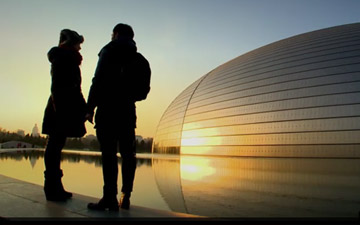
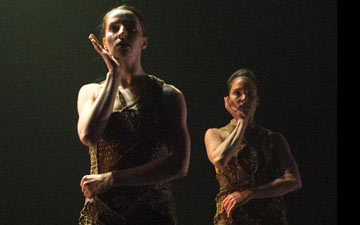
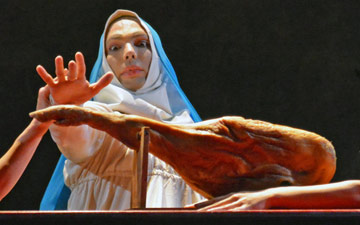
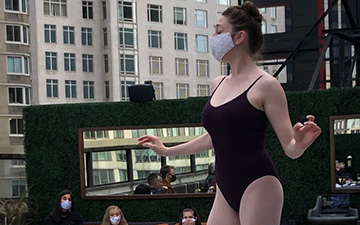
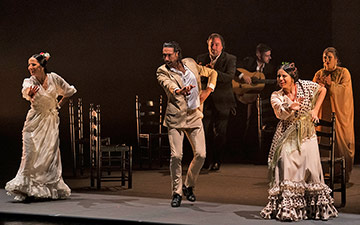
It was as though we walked from the streets of Vauxhall straight into the heart of a packed theatre in Andalucía. The classical dancers, guitarist and singer were all excellent and well supported by the other cast members. Very enjoyable.